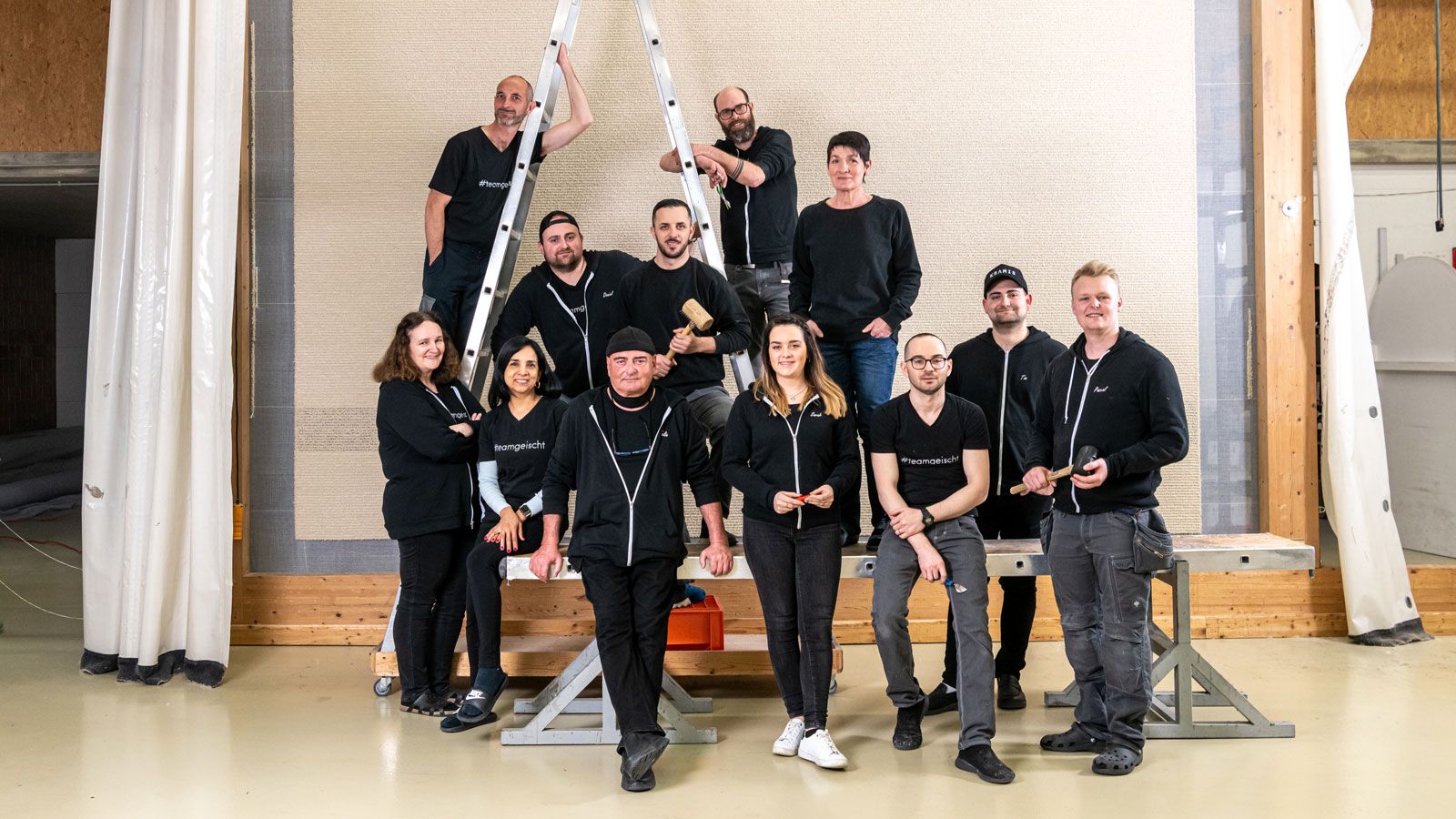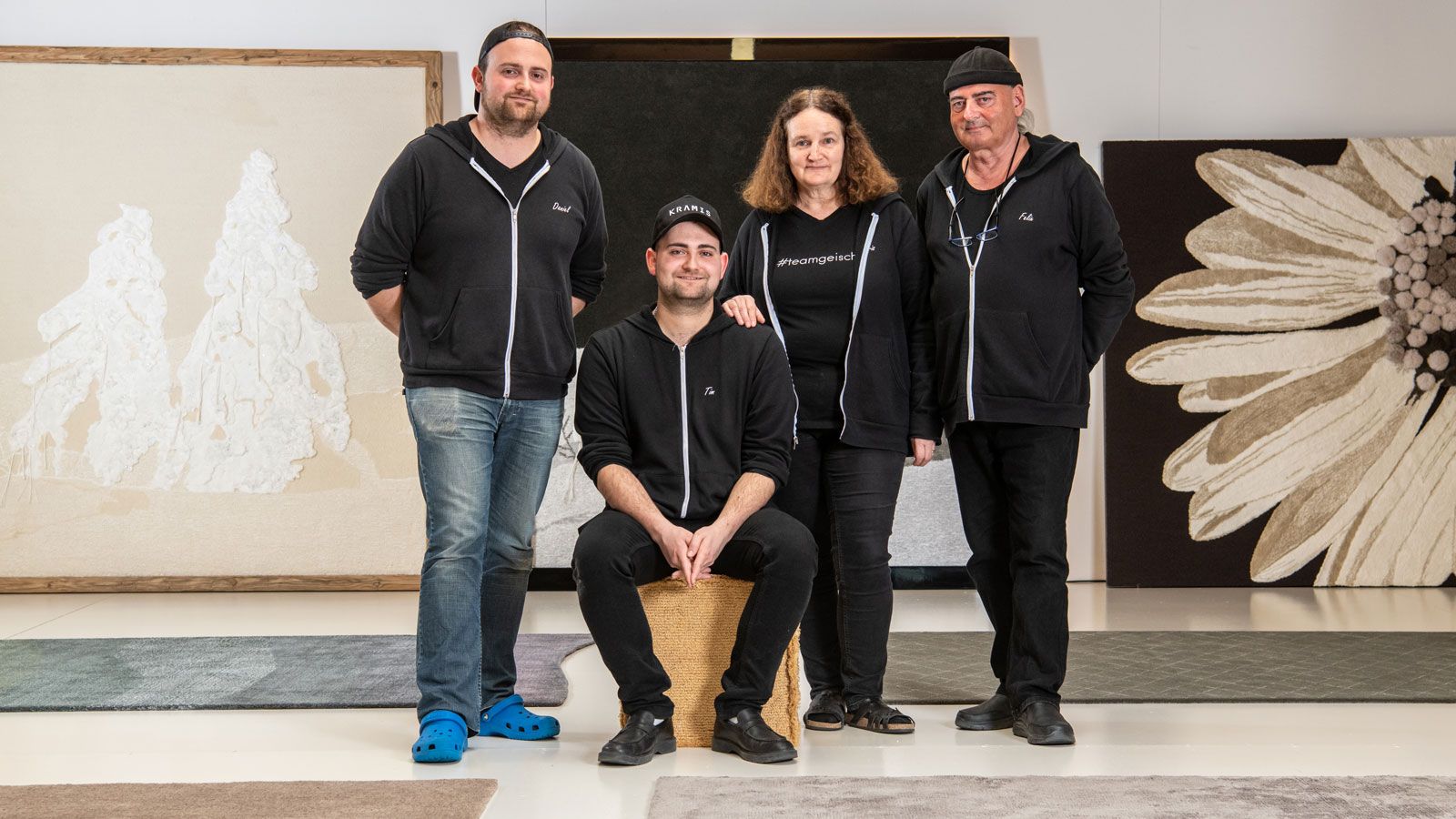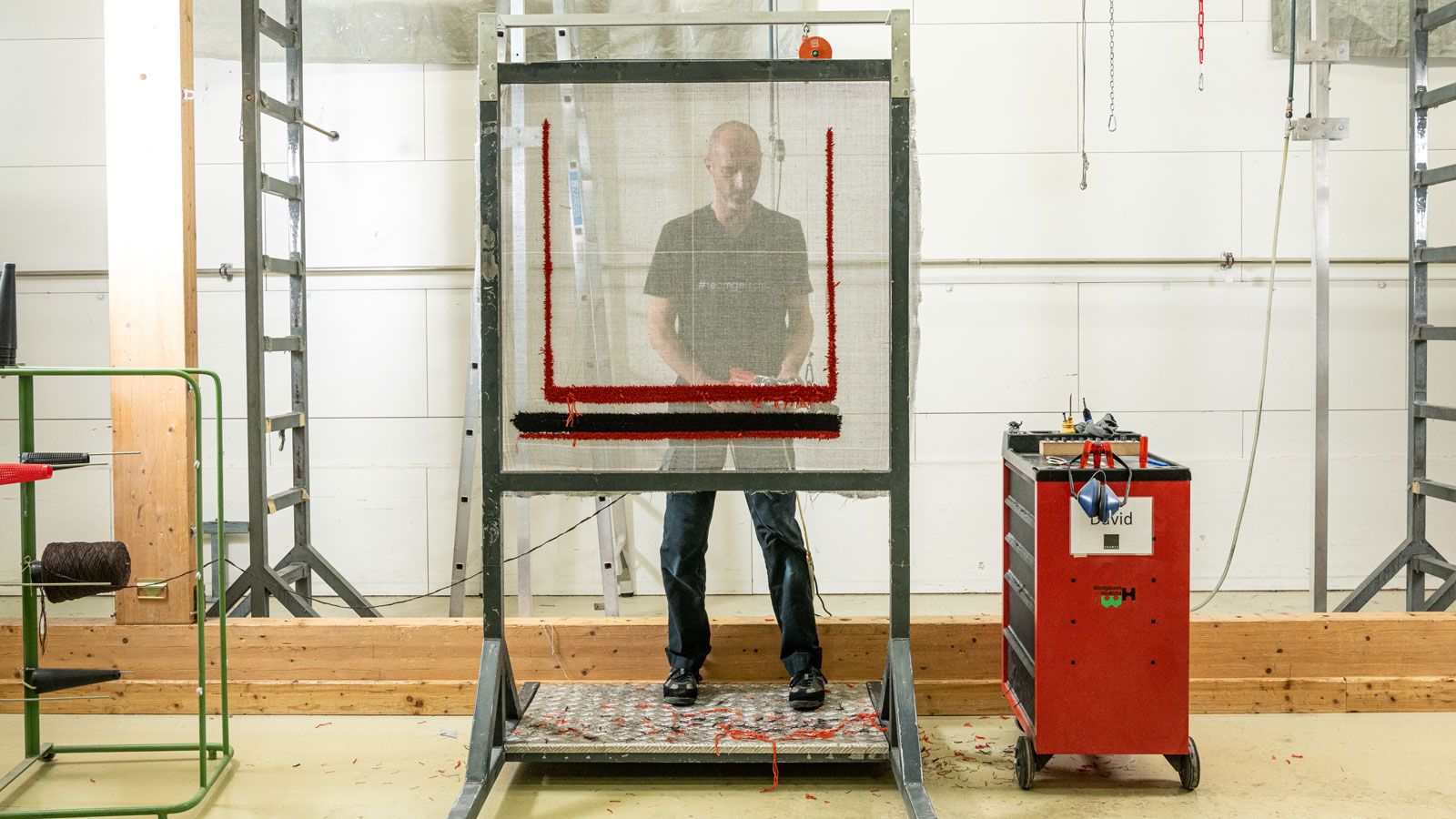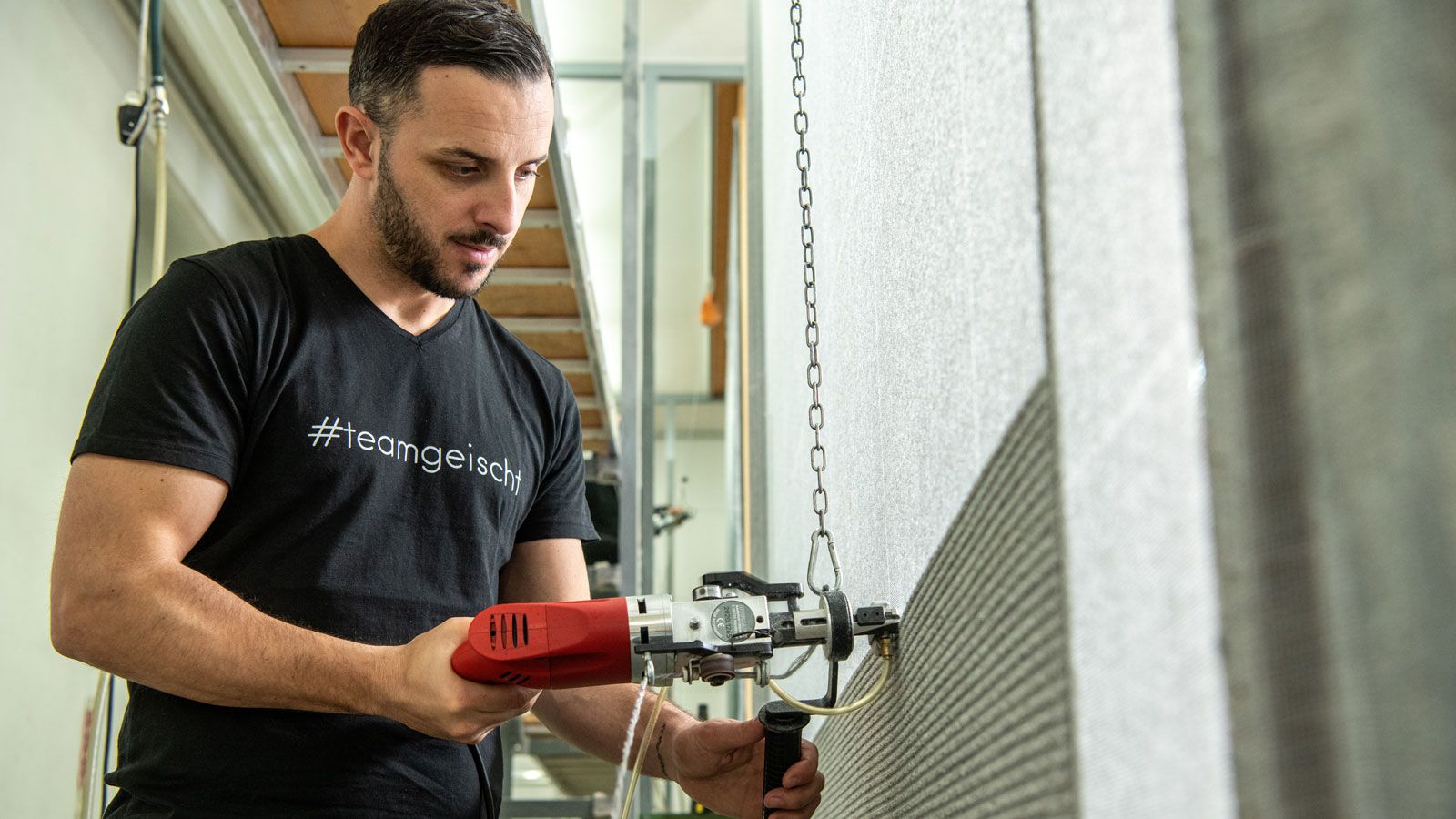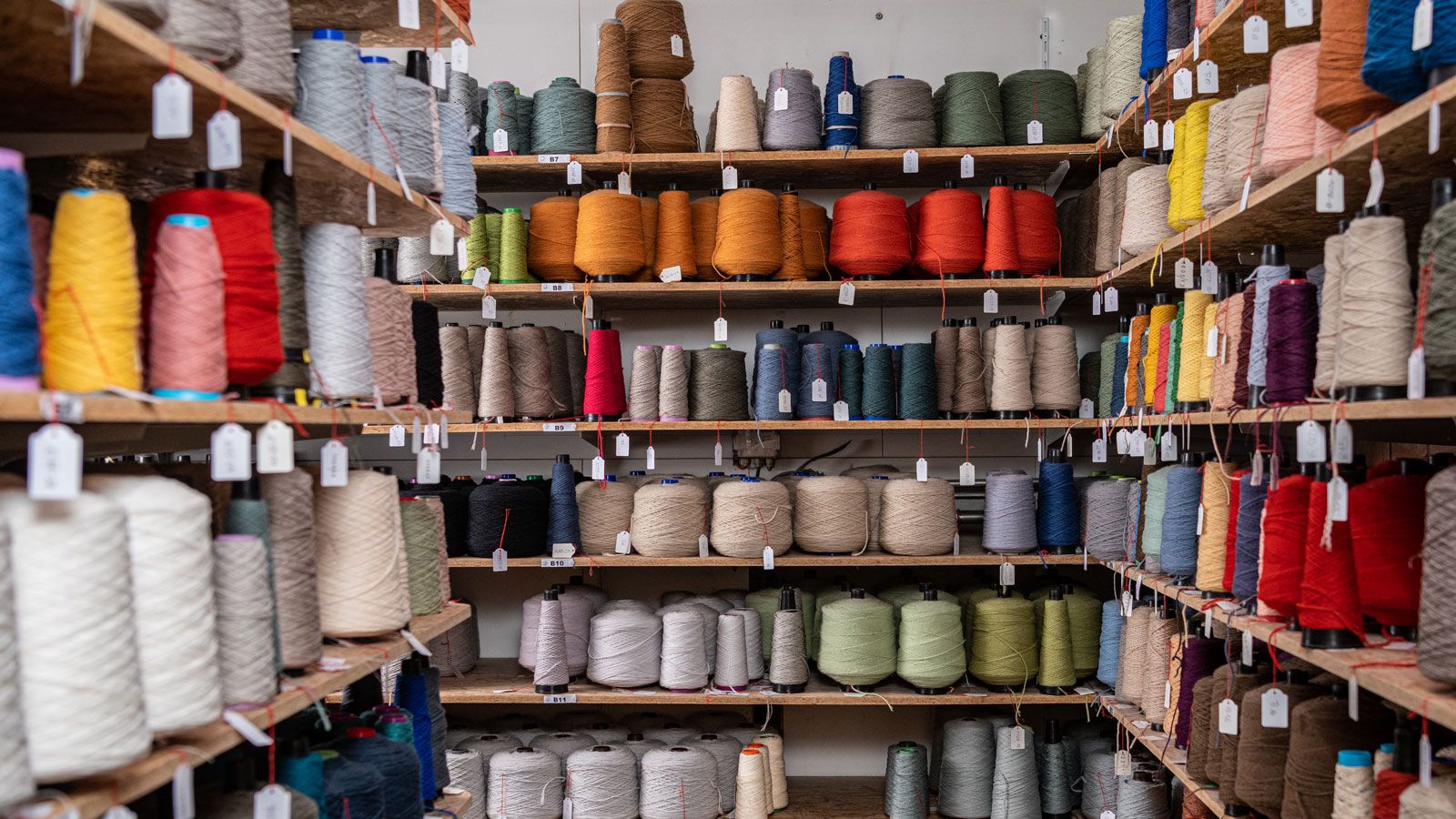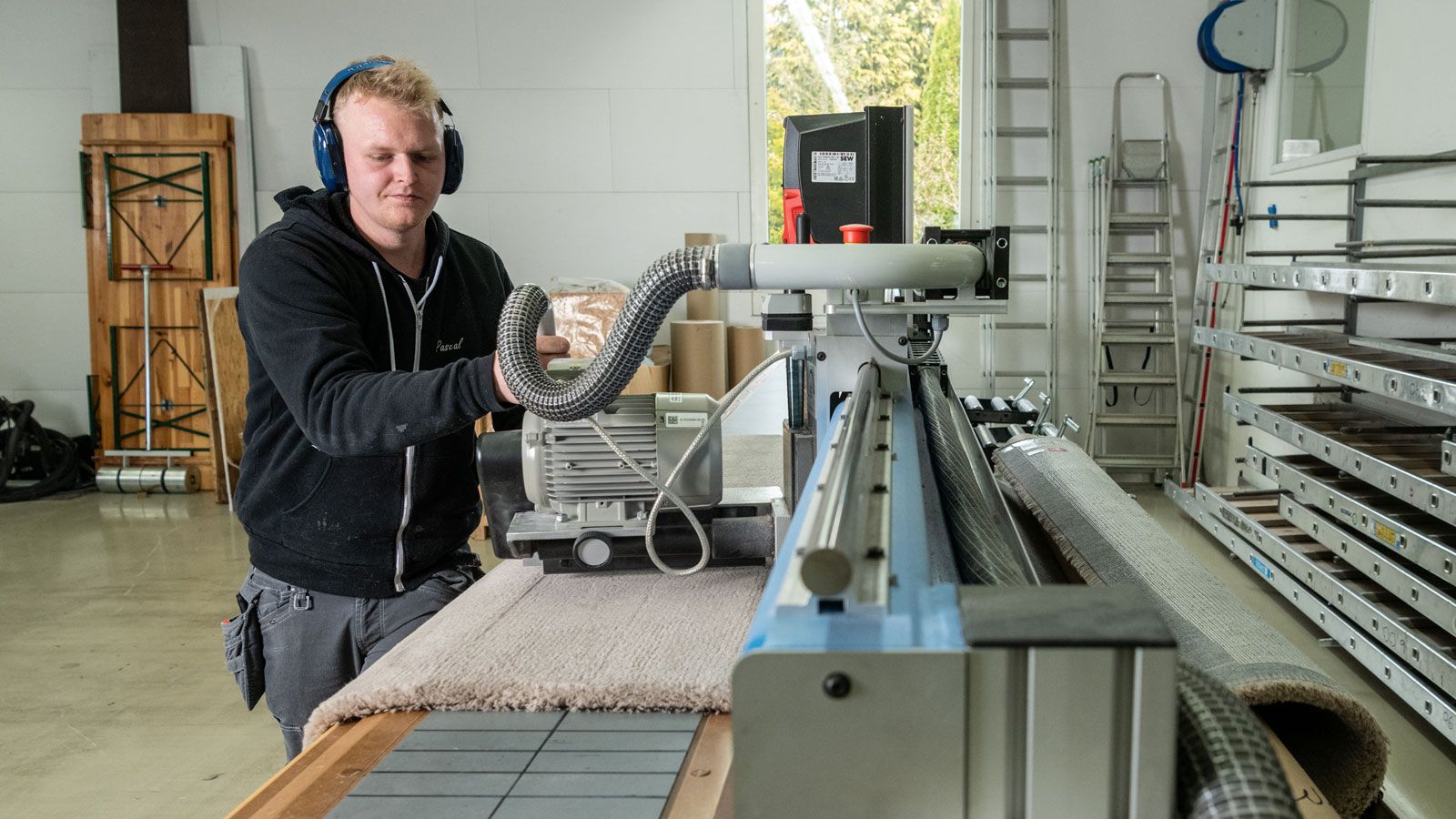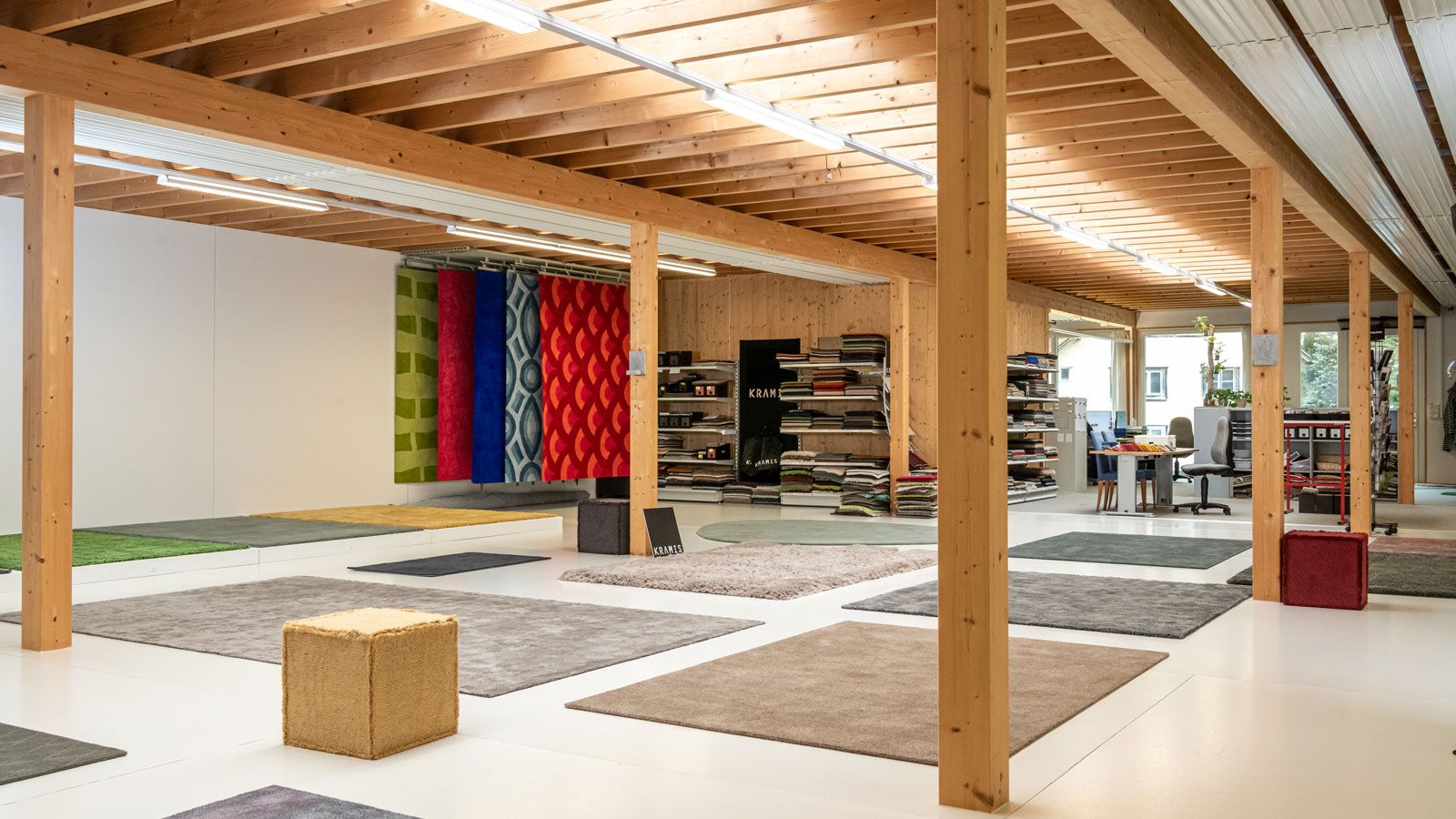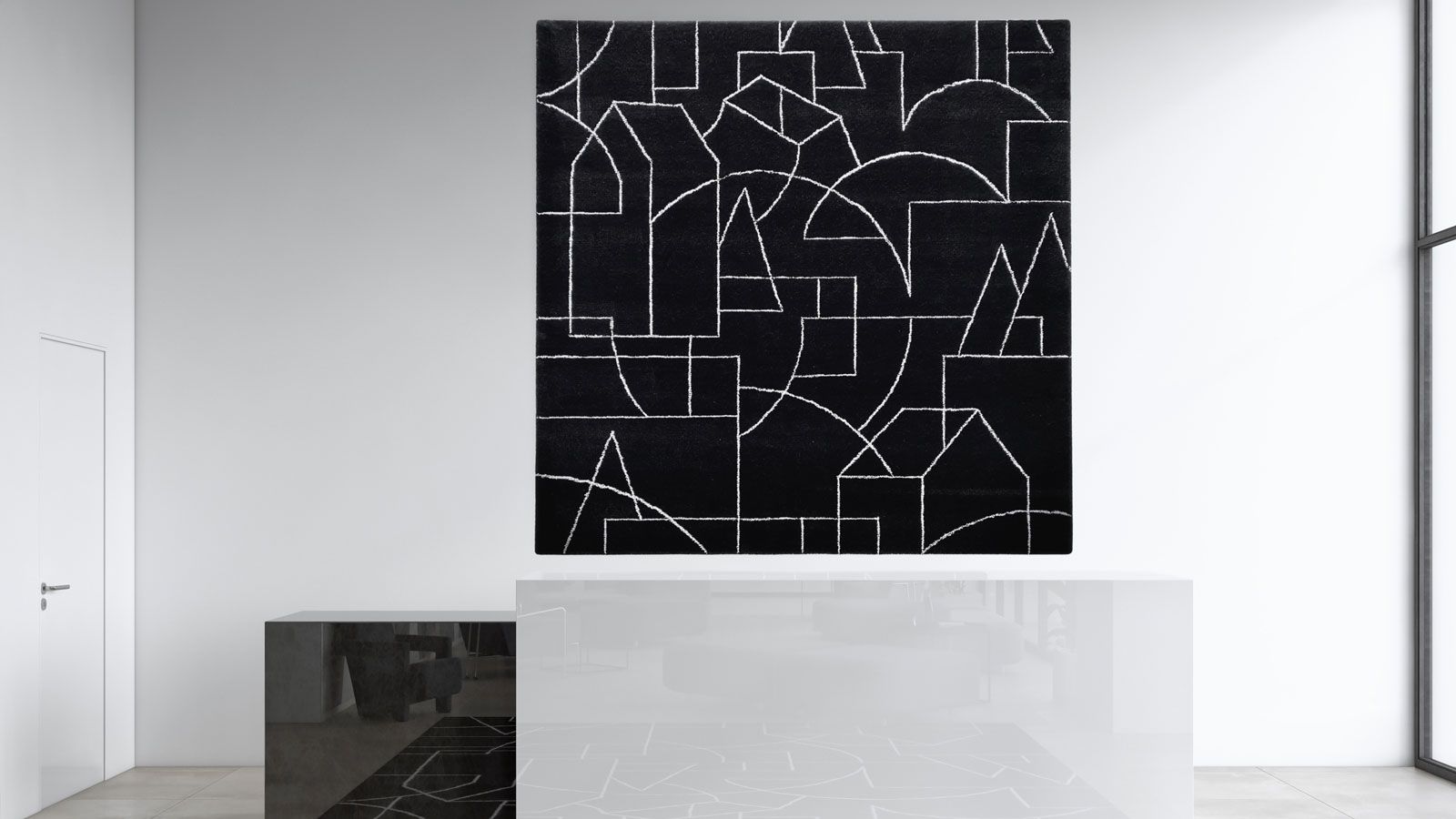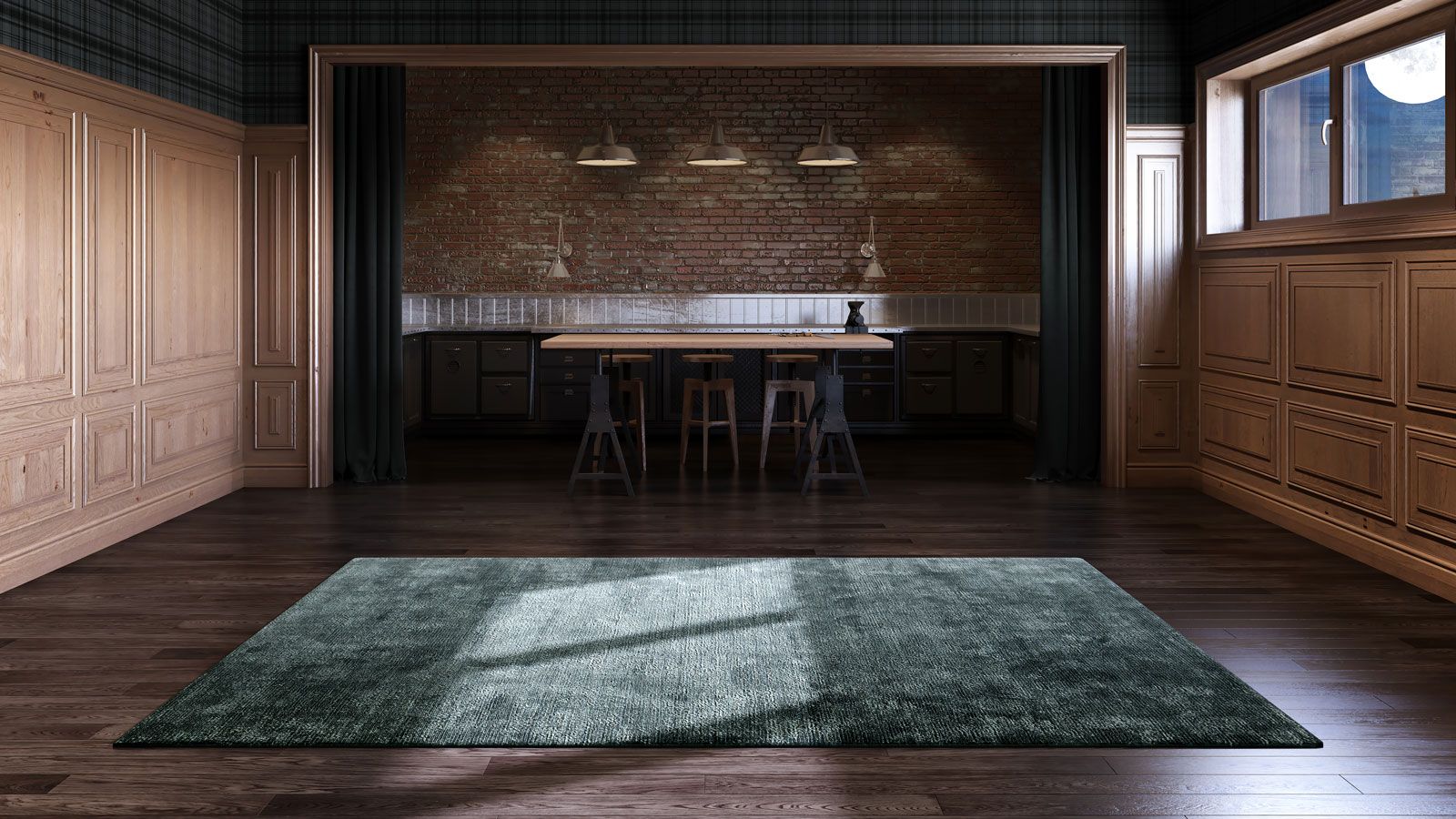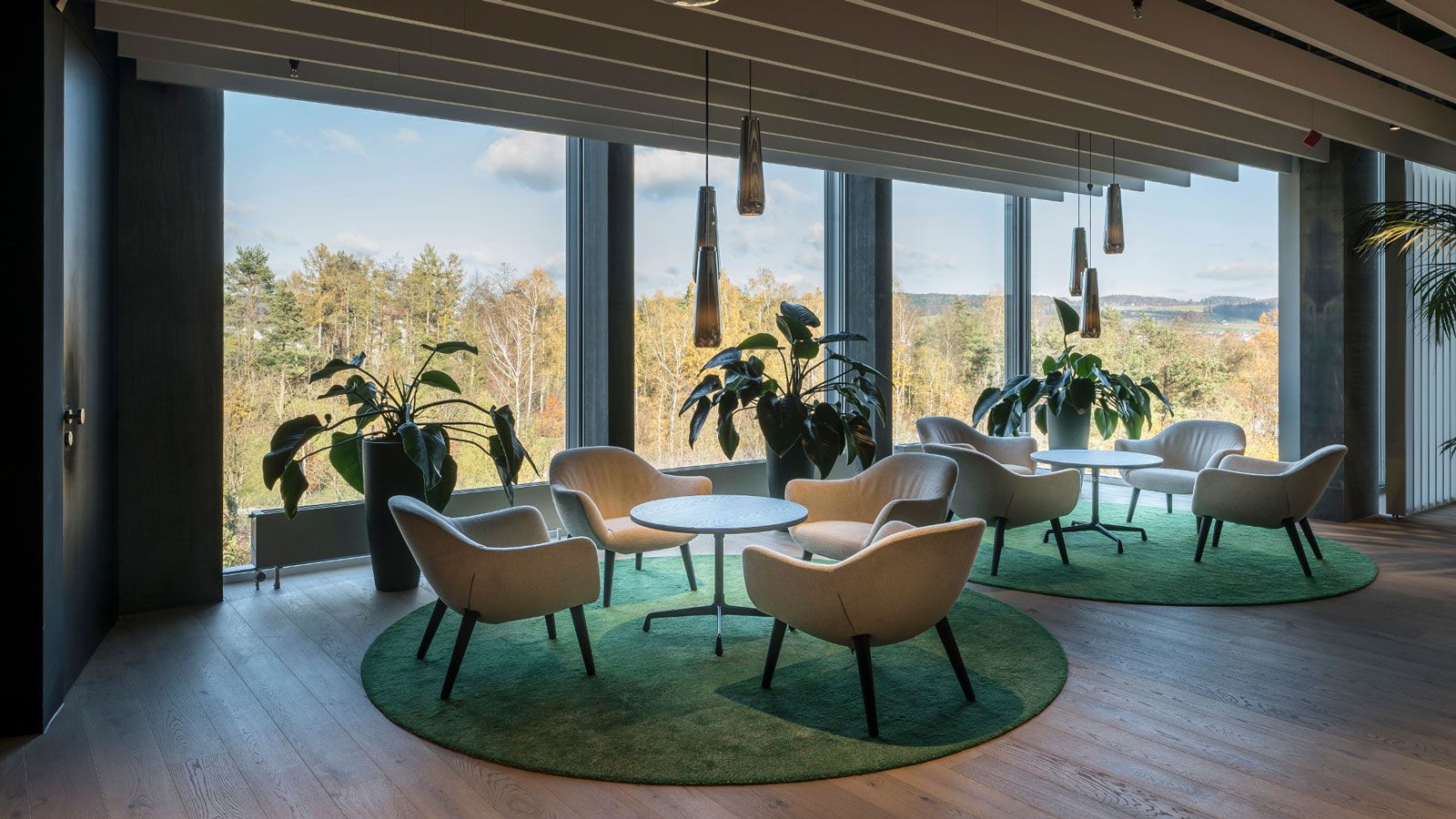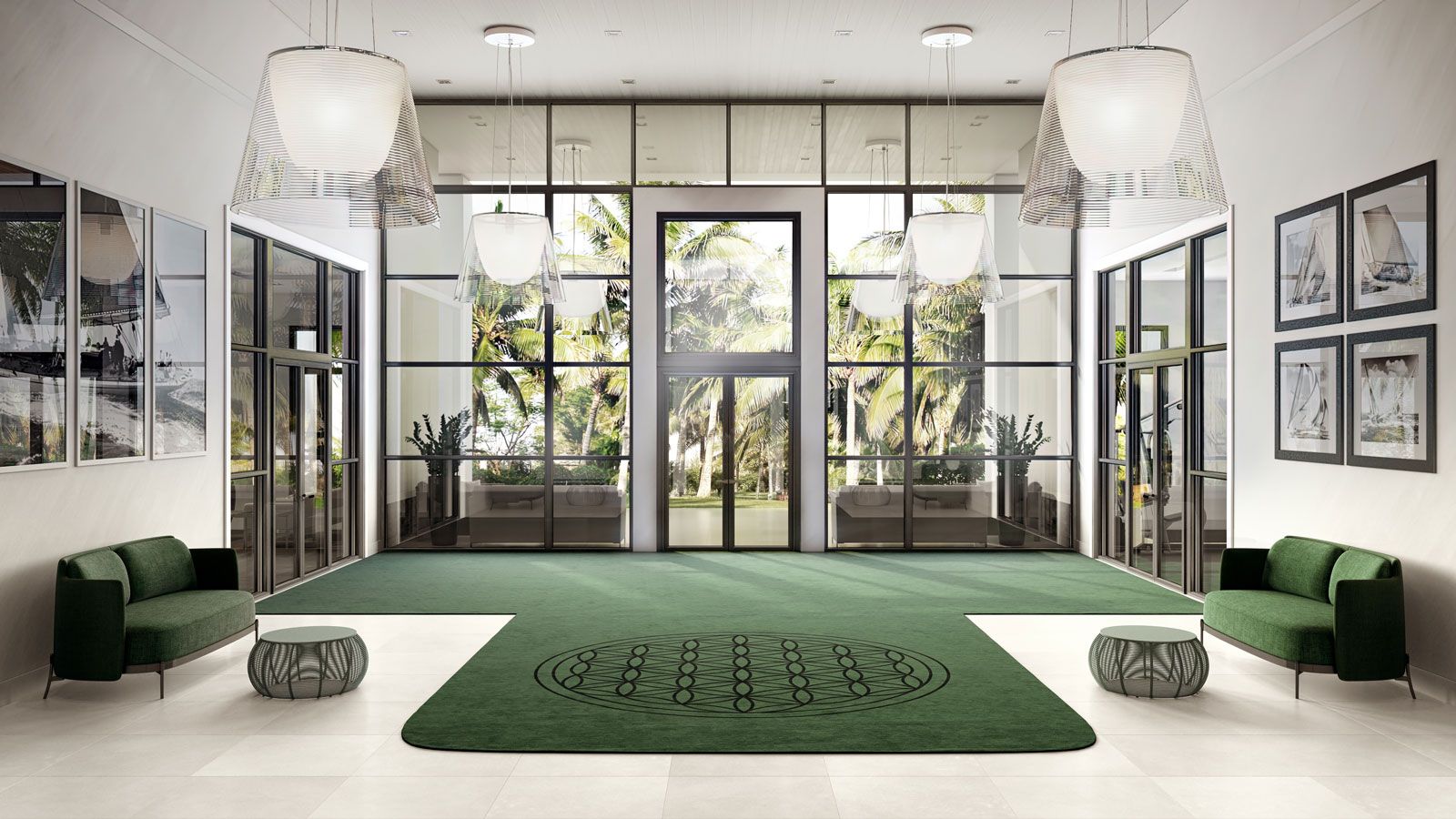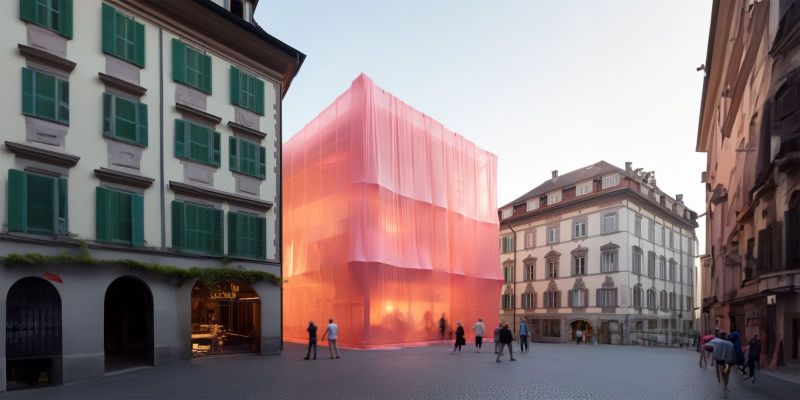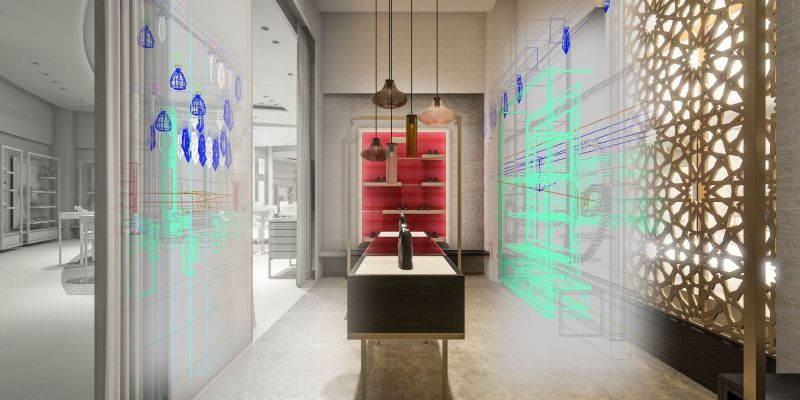28. September 2023
Despite Worldwide Fame, the Rug Is Still Firmly Under Their Feet
Kramis has been manufacturing exclusive hand-tufted pieces for well-known clients such as Vitra and SAP since 1987. This family-owned business in a tiny Swiss village achieved worldwide fame in 2022 – thanks to the ingenuity of the new generation.
Sometimes positive things unexpectedly come out of negative ones. The history of Kramis, for example, began with an accident: Felix Kramis was forced to give up his original profession as a stonemason and take a job at a rug manufacturer in the neighbouring village. Seven years later, in 1987, he founded his own company specialised in hand-tufted rugs for private use. Now Kramis also manufactures hand-tufted rugs for the commercial sector. Today the handmade pieces can be found in exclusive boutiques, unique showrooms, upscale hotels and public sector buildings.
One of a tuft
Kramis is the only manufacturer in Switzerland that does manual tufting work. «There is one other domestic producer and they use a hand-tufting machine mounted on a robot», Tim Kramis explains, «but that limits the possibilities because of the machine’s radius of movement.» In Altbueron, the 1,000-inhabitant village in the canton of Lucerne where Kramis is located, each and every rug is made by hand. Which means there are virtually no limits in terms of design, shape and size.
Tim Kramis has been working in the 12-person family business since he finished his first apprenticeship in business ten years ago. The 25-year-old is head of marketing and sales. His brother Daniel joined Kramis 16 years ago and takes care of purchasing, human resources and production, among other things. Tim describes it as «a smooth transition to the next generation». The brothers will continue to benefit from their parents’ experience and knowledge before completely taking the yarns from Felix and Doris Kramis at some point in the near future.
An in-office mini-golf course
So, after 40 years in the business, have they seen it all? «Nope», Tim laughs, «To this day our custom requests still surprise us.» One of the company’s most unusual orders was to make a rug that looked like a golf course for an office. The organ-shaped piece, roughly four-metres in diameter, even had a hole for a golf ball to fall into. The hand-tufting technique is becoming more attractive because it enables custom designs. «Buyers value an exclusive, high-quality object that can’t be found anywhere else and that isn’t like anything else – now or ever.»
Consumers find Kramis by way of interior architecture offices and domestic specialist shops. The company only cooperates with selected partners and its clientele is largely from Switzerland. From time to time Kramis will also work with international design studios, but the product ends up in Switzerland most of the time.
People’s biggest concern? Choosing the wrong colour
Not all rugs produced in Altbueron are custom designs. The factory also has range of commercial rugs and luxury collections – although the size, shape and colour is determined on a case-by-case basis. Upon request, the tufters at Kramis produce small samples within two days, allowing buyers to make their decisions with confidence in their own spaces.
Kramis has its own palette with 150 different choices and offers the option of custom colours as well. However, according to Tim Kramis, most of their clientele avoids strong colours because they are afraid of regretting their choice later on. He explains that there has been a long-standing trend of single-colour rugs in the Swiss market and that when yarns are combined they are often from similar colour schemes.
The luxury collections are often created with external designers and institutions. Two years ago, Kramis joined force with the St. Gallen artist and illustrator Dominik Rueegg to bring «Komposition drü» to market which worked very well both on walls and floors. A collaboration with aspiring textile designers from the Lucerne University of Applied Sciences and Arts yielded «Ile Mobile», which was recently launched.
Kramis has a handful of regular collaborators. Among them is Alexa Blum: «unofficially our company’s external designer».
Natural fibres are non-negotiable
All of Kramis’s high-quality rugs are made of linen, virgin wool or a mix of the two fibres. Virgin wool is very durable, neutralises odours and, thanks to a naturally occurring grease film, repels grease and water. Virgin wool rugs also improve room acoustics and regulate the humidity and ambient temperature. Linen is used above all for its appearance: it gives rugs an elegant shine and makes their surface structure look even more lively.
The manufactory processes around five tonnes of linen and five tonnes virgin wool per year. A quantity that, to the regret of the sustainability-minded company, currently cannot be sourced from Switzerland because it would be prohibitively expensive. «Luckily, though, there are efforts to make flax production attractive to Swiss farmers again», Tim Kramis explains.
Even if Kramis cannot make all its products with Swiss-sourced raw materials at the moment, at least they have one collection that does. Before the end of this year, Kramis will launch with Alexa Blum a line of hand-tufted rugs made exclusively of Swiss linen and virgin wool. The virgin wool comes from various Swiss sheep farms and the natural linen from the Emme Valley (Emmental), a region that Kramis knows very well. The Probst dyeing factory in Emmenmatt dyes all the yarns for the manufactory. The small amount of bobbins in the Altbueron yarn storage room is only used for sample production. There is approximately one tonne of raw yarn in Probst’s storage room, which only gets dyed once an order has been received. Kramis thus prevents overproduction.
Unexpectedly world famous
A luxury product, such as Kramis manufactures, has its price. «The word ‹sale› is not in our company’s vocabulary», says the head of marketing with conviction. Their loyalty to producing in Switzerland brought the manufactory into difficulties before the pandemic: Swissness was less valued and people were showing less and less interest in quality. In hindsight Tim Kramis is happy that the company stayed true to its values. Since Covid, people have recognised the advantages of local production. The international political situation reinforced this trend.
The covid crisis had another unexpectedly positive effect on the family-owned company: creative hobbies such as hand-tufting became popular topics on social media. The Kramis community on Instagram, TikTok and YouTube grew, and by the end of 2022 the manufactory achieved a small but significant feat: a video went viral, 14 million users got to know Kramis and the company gained approximately 110,000 new Instagram followers.
The digitally savvy Tim Kramis seized the moment and the community’s strong interest in the expertise of the family-owned company. He developed an e-book for the international «hobbyist rug tufters» and produced a 10-part video series that can be downloaded for a one-time fee. The knowledge transfer was a controversial issue within the company, but finally the new generation convinced the critical voices. Weaving together long-time traditions and innovative ideas is the recipe for a successful future!
Explore More Space Stories
Space Story #41 | 14 June 2024
Extreme Taste: An Extraordinary Journey Through the World of Taste
Can we actively steer, manipulate or deceive our taste buds? If so, what role could a physical space play in doing so? These were the questions we asked in the «Extreme Taste» competition.
Space Story #8 | 29 October 2020
Added Value for Shop Designs with Virtual Reality
Photorealistic renderings are now an integral part of every retail design project. With Virtual Reality (VR), the next generation of visualisation tools is on the horizon. DOBAS CEO Patrick Buchecker explains how VR works and the opportunities it presents.

